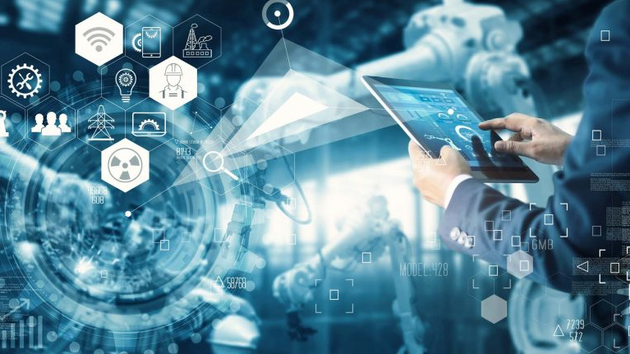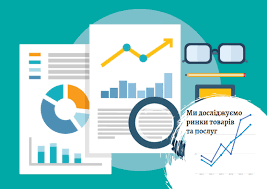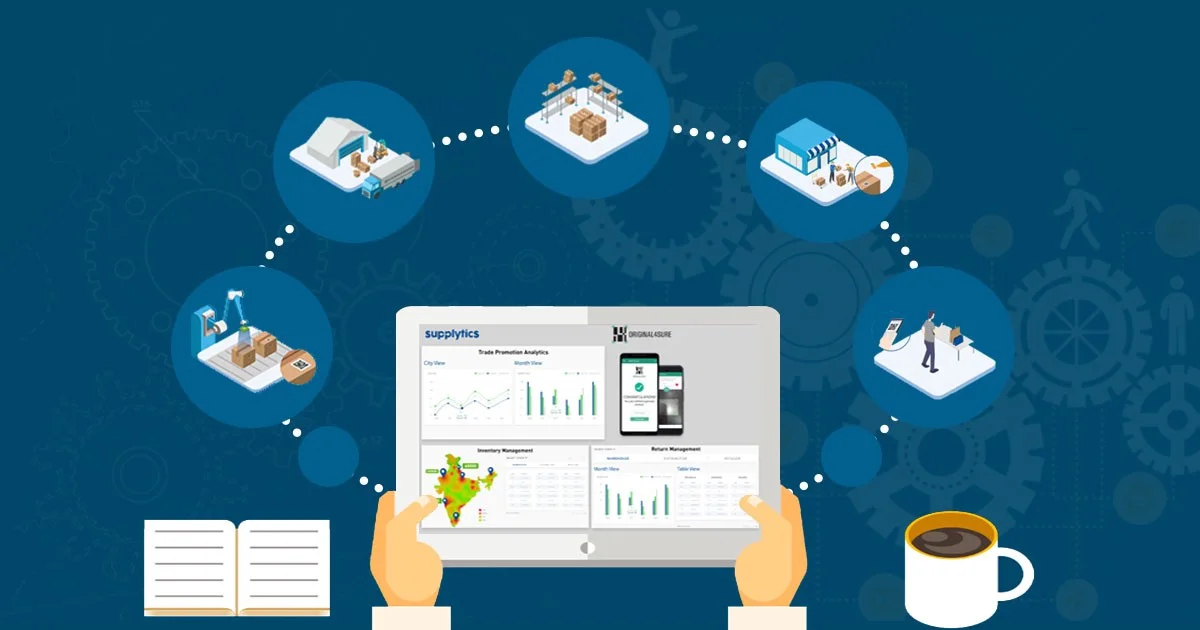Hello!
Imagine if you can employ machine learning and other kinds of AI into the terabytes of transactional and detector information being gathered from the supply chain? The outcome might be a more autonomous and beneficial kind of supply chain analytics and also, finally, a much more responsive supply chain.
IoT sensors carry more data than ever before in SCM platforms, making analytics more complex and effective at the same time. Machine learning is unavoidable helpers.
 In reality, there’s a great deal of interest in utilizing AI and machine learning how to boost supply chain analytics, based on David Simchi-Levi, a professor of engineering systems at MIT.
In reality, there’s a great deal of interest in utilizing AI and machine learning how to boost supply chain analytics, based on David Simchi-Levi, a professor of engineering systems at MIT.
A lot of the attention from the supply chain is driven with the capability to incorporate predictive and predictive analytics into, in nature, mix AI and optimization technology.
Especially, organizations are utilizing AI in two regions of the supply chain: to boost predictive analytics to understand behaviors and to get prescriptive analytics, in which computing technology requires input in machine learning and attempt to aid decision-makers make better choices, Simchi-Levi explained.
By way of instance, a fashion retailer declares it is going to improve sales significantly in the upcoming few decades. The challenge is calling for enhancing earnings and improving supply chains,” he explained. The merchant realizes it is not likely to be in a position to get it done by adding individuals. The question AI will help reply would be, “May I develop my company without considerably increasing the amount of people that we have?”
 In supply chain management, the chance comes in the capability to utilize machine learning how to increase customer forecast and demand forecast. Better demand forecast has a large effect on the supply chain, beyond simply knowing customer requirements, Simchi-Levi explained.
In supply chain management, the chance comes in the capability to utilize machine learning how to increase customer forecast and demand forecast. Better demand forecast has a large effect on the supply chain, beyond simply knowing customer requirements, Simchi-Levi explained.
“What is significant in machine learning is that the simple fact that not only can I develop a prediction, I will also report what the amount of assurance is that is connected with the prediction,” he explained. “I will inform you the prediction is the next quarter we’ll sell 50 content of the item, but I will also let you know exactly what the amount of assurance is within this. Given these two pieces of advice, it lets you know which you will need to redesign your supply chain plan .”
Supply chain analytics for better demand planning
Organizations could also embrace machine learning how to boost demand intending engineering by improving the validity of the forecasts or identifying patterns that are not easy to locate, according to a November 2018 report titled,”A Supply Chain Analytics Leader’s Due Diligence Checklist for AI Projects,” composed by Gartner analyst Noha Tohamy.
 “Natural language may be embedded inside a buying tool to offer purchasing managers with added advice on providers and buying contracts in a more consumable fashion,” Tohamy composed in the accounts.
“Natural language may be embedded inside a buying tool to offer purchasing managers with added advice on providers and buying contracts in a more consumable fashion,” Tohamy composed in the accounts.
Applying AI to the rising volume of information from IoT detectors is just another promising trend in supply chain analytics.
AI and IoT can empower organizations to track and manage supply chain procedures, said Terence Toland, a member with the international business policy council at Chicago-based A.T. Kearney, within an email.
“Per our 2017 State of Logistics Report, many third-party logistics suppliers utilize embedded sensors to monitor shipments and enhance forecasting accuracy,” Toland said. “Likewise, air freight utilizes smart sensors that offer real-time place upgrades, which prove invaluable for time-sensitive shipments.”
Sensor-enabled assets can offer real time insight over the supply chain all the way to the end consumer, ” he explained. Sensor data may also be employed to make digital twins, in which a software version is created from a physical thing. The applications of those digital twins comprise predictive care and enhanced product development.
 “Given the rapid proliferation of IoT apparatus, we expect that such programs will become more prevalent,” Toland said.
“Given the rapid proliferation of IoT apparatus, we expect that such programs will become more prevalent,” Toland said.
Mixing AI using IoT technology may also boost efficiency while reducing downtime and maintenance. IoT and information analytics help improve strength performance by collecting data and converting it to helpful data in real-time, Toland said, mentioning another A.T. Kearney report.
“Integrating IoT using AI and information analytics will enhance generation efficiency by shortening production lead times and cycles,” he explained. “Businesses can utilize complex data analytics and AI to make always, helping lower overall costs and raising productivity.”
Organizations may also use AI to spot areas of progress and predict demand and stock levels in several ways, based on Toland. AI-powered robots, as an instance, are going to have the ability to adjust production to changing customer demand.
A.T. Kearney has just reported growing instances of organizations utilizing AI-powered forecasts to supply decision-makers with information from point-of-sale systems which identify the exact SKU volumes being marketed via particular shops, ” he explained. These capabilities enable businesses to base conclusions on more precise predictions.
 “AI and digitization may play an increasingly important part in improving supply chain analytics,” Toland said, quoting statistics from his company’s survey of international executives. Half of the respondents identified AI and machine learning providing the best area of opportunity one of emerging technologies at the year ahead — almost twice the prior year’s reaction.
“AI and digitization may play an increasingly important part in improving supply chain analytics,” Toland said, quoting statistics from his company’s survey of international executives. Half of the respondents identified AI and machine learning providing the best area of opportunity one of emerging technologies at the year ahead — almost twice the prior year’s reaction.
Nonetheless, these capabilities must be developed alongside an ability to”pivot and sense” to changing conditions on earth. There’ll remain crazy cards and shocks into the working environment that even the best AI and predictive analytics can not expect, based on Toland.
“Along with investment in these electronic capabilities, businesses need to take action to incorporate flexibility and adaptability throughout their supply chain,” he explained. “This implies developing the capability to quickly make alterations to planning, production, logistics and supply as requirements and demand patterns change ”
Applications in logistics, transportation management
 The very first thing Bill McBeath thinks of as it pertains to the way AI can enhance supply chain analytics will be demand calling.
The very first thing Bill McBeath thinks of as it pertains to the way AI can enhance supply chain analytics will be demand calling.
“It is a place where we’re seeing AI being implemented, ” said McBeath, chief research officer at ChainLink Research, located in Newton, Mass…
Before AI, forecasting specialists sought out calculations that they believed were the very best to fix every issue, he explained. With AI, they could begin to take in data more quickly and allow the AI algorithms to locate patterns they are not seeing traditional algorithms.
Businesses are also beginning to use AI to acquire more exact estimated times of arrival, based on McBeath.
“ For instance, I have a truck moving across the nation, and this course takes [X times] long. If folks are smart, they understand that during a specific time of year, it requires more or it requires less time on a specific day of the week,” he said.
For instance, I have a truck moving across the nation, and this course takes [X times] long. If folks are smart, they understand that during a specific time of year, it requires more or it requires less time on a specific day of the week,” he said.
AI will make path planning more precise by moving through a whole lot of information and beginning to detect these deviations from the typical at various times annually, McBeath stated.
Additionally, AI helps businesses utilize supply chain analytics to market shipments more efficiently.
“Let us say you’ve got advice about 10,000 shipments a week which are coming to your business, and you wish to understand which ones are overdue,” McBeath said. “That is difficult for an individual to perform, but simply to get an AI system to perform. However, you don’t care about all them that are overdue, so [it’s possible to utilize AI] to filter people, then perhaps prioritize them impact on earnings or influence on key clients.”
 AI helps firms take substantial amounts of information and understand what is important to make improved choices. They then could detect the results of those choices, begin to determine which decisions are functioning and which are not, and finally determine if they need to do something otherwise, McBeath stated.
AI helps firms take substantial amounts of information and understand what is important to make improved choices. They then could detect the results of those choices, begin to determine which decisions are functioning and which are not, and finally determine if they need to do something otherwise, McBeath stated.
Thank you!
Join us on social networks!
See you!






